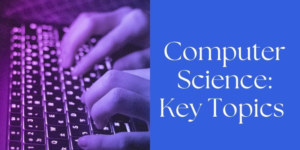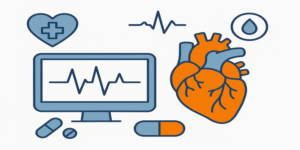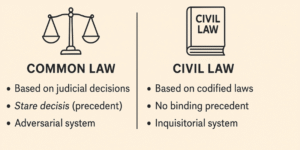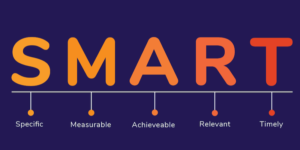In today’s technology-driven society, the concept of digital literacy has emerged as a fundamental skill essential for full participation in modern life. Just as traditional literacy—the ability to read and write—was once a gateway to opportunity, digital literacy now serves as a key enabler of success in education, employment, and social inclusion. As the digital transformation continues to reshape the way people learn, work, and communicate, understanding and cultivating digital literacy has become imperative for individuals and societies alike (Eshet-Alkalai, 2004; Ng, 2012).
1.0 Understanding Digital Literacy
1.1 Definition
Digital literacy refers to the ability to find, evaluate, use, create, and communicate information using digital technologies (Eshet-Alkalai, 2004). It encompasses a wide spectrum of competencies, from operating devices and navigating software to engaging critically and ethically with digital content. According to the European Commission (2018), digital literacy is a critical component of digital competence, which also includes problem-solving, safety, and collaboration in digital environments.
2.0 Components of Digital Literacy
2.1 Technical Skills
At its foundation, digital literacy involves technical proficiency—the ability to use computers, mobile devices, and software applications effectively. This includes tasks such as using word processors, managing files, and navigating the internet. As Warschauer (2003) argues, access to technology alone is insufficient; the capability to use it productively is what defines true digital inclusion.
2.2 Information Literacy
Information literacy—a concept overlapping with digital literacy—refers to the ability to locate, evaluate, and synthesise digital information (Mackey & Jacobson, 2011). In a world saturated with online content, distinguishing credible sources from misinformation is critical. For instance, during the COVID-19 pandemic, a lack of information literacy contributed to the spread of fake news and health misinformation (Cinelli et al., 2020).
2.3 Media Literacy
Media literacy involves critically analysing digital media messages to understand bias, intent, and credibility (Livingstone, 2004). In the age of social media, individuals constantly encounter persuasive content—advertisements, news, and user-generated media. Developing this literacy allows users to recognise misrepresentation and propaganda, fostering more informed and responsible online engagement (Buckingham, 2007).
2.4 Communication Literacy
The ability to communicate effectively through digital means—email, video conferencing, or social platforms—is another vital dimension. This includes understanding digital etiquette, tone, and privacy in communication. As workplaces become increasingly remote and globalised, digital communication literacy underpins effective collaboration (Van Laar et al., 2017).
2.5 Ethical and Safety Awareness
A crucial yet often neglected component is ethical and safety awareness. This includes understanding cybersecurity, data protection, and digital citizenship—respecting others’ rights and behaving responsibly online (Ribble, 2015). In a context where cybercrime and online harassment are rising, digital literacy also entails protecting personal information and recognising potential online threats (Williams, 2017).
3.0 The Importance of Digital Literacy
3.1 In Education
Education systems worldwide increasingly rely on digital platforms for teaching and learning. Digital literacy empowers students to access information, collaborate online, and engage in self-directed learning (Ng, 2012). For example, the use of Google Classroom, Zoom, and educational apps during the pandemic highlighted the importance of digital competence for both teachers and students. Moreover, critical digital literacy encourages learners to question the reliability of sources and reflect on their digital footprint (Buckingham, 2007).
3.2 In the Workplace
Modern workplaces demand a range of digital skills, from basic office applications to data analysis, digital marketing, and automation tools. According to Van Deursen and Van Dijk (2014), employees with higher digital literacy demonstrate increased productivity and adaptability. For example, professionals who can effectively use Microsoft 365, CRM software, or data visualisation tools are often better positioned for career advancement in a digitised economy.
3.3 In Daily Life
Digital literacy also influences how individuals bank, shop, and communicate. Tasks such as online transactions, telehealth consultations, or app-based navigation rely on a basic level of digital competence (Hargittai, 2002). Importantly, it enables civic participation, allowing citizens to access e-government services and engage in public discourse (Van Dijk, 2020).
4.0 Enhancing Digital Literacy
4.1 Education and Training
Embedding digital literacy in formal education ensures foundational skills are developed early. For instance, the UK Department for Education (DfE, 2019) advocates integrating digital skills across school subjects. Equally, professional development programmes help workers stay current with evolving technologies (Van Deursen & Van Dijk, 2014). Continuous learning through digital upskilling initiatives—such as the UK’s “Essential Digital Skills Framework”—promotes lifelong adaptability.
4.2 Access to Technology
Access remains a precondition for digital literacy. Infrastructure development, including affordable broadband and devices, is essential for equity (Warschauer, 2003). Public libraries and community centres often act as local hubs offering free internet access and digital training (Katz, 2002). For example, the UK’s Good Things Foundation provides digital inclusion programmes targeting disadvantaged groups.
4.3 Self-Directed Learning
The availability of online learning platforms—such as Coursera, Udemy, and Khan Academy—has democratised access to digital education. Learners can pursue topics from coding to cybersecurity at their own pace. Participating in MOOCs (Massive Open Online Courses) supports continual digital skill enhancement (Jenkins, 2006).
4.4 Promoting a Digital Culture
A digital culture encourages exploration and creativity in using technology. Fostering critical thinking, collaboration, and problem-solving helps learners move beyond passive consumption to active engagement (Jenkins, 2006). For example, project-based learning involving digital storytelling or app development enhances both technical and cognitive aspects of literacy.
5.0 Challenges in Digital Literacy
5.1 Digital Divide
Despite global connectivity, a significant digital divide persists—between individuals and regions with differing access to technology (DiMaggio et al., 2004). Factors such as income, education, and geography contribute to this divide. In developing nations, lack of internet infrastructure and digital education limits opportunities for full participation in the digital economy (Warschauer, 2003).
5.2 Cybersecurity Threats
As online engagement increases, so does exposure to cyber risks such as phishing, identity theft, and malware. Individuals with limited cybersecurity awareness are more vulnerable (Williams, 2017). Education on password hygiene, safe browsing, and data encryption is therefore vital in promoting digital resilience.
5.3 Rapid Technological Change
The pace of technological innovation means digital skills can quickly become outdated. Workers and students alike must engage in continuous learning to remain relevant (Ritzhaupt et al., 2013). This dynamic demands adaptability and lifelong learning as core components of digital literacy.
Digital literacy is far more than technical know-how—it is a multifaceted skillset that integrates critical thinking, ethical awareness, and cultural understanding. It underpins participation in education, work, and civic life, shaping how individuals interact with an increasingly digital society. Addressing barriers such as the digital divide and cybersecurity risks remains essential to ensure inclusivity. As technologies evolve, fostering digital literacy across all sectors will be crucial for economic competitiveness, social cohesion, and personal empowerment. In essence, digital literacy is the new literacy of the 21st century—a fundamental tool for navigating and thriving in the modern world.
References
Buckingham, D. (2007). Digital Media Literacies: Rethinking Media Education in the Age of the Internet. London: Polity Press.
Cinelli, M. et al. (2020). The COVID-19 social media infodemic. Scientific Reports, 10(1), 16598.
Department for Education (DfE). (2019). Essential Digital Skills Framework. London: UK Government.
DiMaggio, P., Hargittai, E., Celeste, C. & Shafer, S. (2004). Digital Inequality: From Unequal Access to Differentiated Use. Social Inequality, 355–400.
Eshet-Alkalai, Y. (2004). Digital Literacy: A Conceptual Framework for Survival Skills in the Digital Era. Journal of Educational Multimedia and Hypermedia, 13(1), 93–106.
European Commission. (2018). Digital Competence Framework for Citizens. Brussels: EU Publications.
Hargittai, E. (2002). Second-Level Digital Divide: Differences in People’s Online Skills. First Monday, 7(4).
Jenkins, H. (2006). Confronting the Challenges of Participatory Culture: Media Education for the 21st Century. Cambridge, MA: MIT Press.
Katz, J. (2002). Social Consequences of Internet Use: Access, Involvement, and Interaction. Cambridge, MA: MIT Press.
Livingstone, S. (2004). Media Literacy and the Challenge of New Information and Communication Technologies. Communication Review, 7(1), 3–14.
Mackey, T.P. & Jacobson, T.E. (2011). Reframing Information Literacy as a Metaliteracy. College & Research Libraries, 72(1), 62–78.
Ng, W. (2012). Can We Teach Digital Natives Digital Literacy? Computers & Education, 59(3), 1065–1078.
Ribble, M. (2015). Digital Citizenship in Schools: Nine Elements All Students Should Know. Washington DC: ISTE Press.
Ritzhaupt, A.D., Liu, F., Dawson, K. & Barron, A.E. (2013). Differences in Student ICT Literacy Based on Socio-economic Status. Journal of Research on Technology in Education, 45(4), 291–307.
Van Deursen, A.J.A.M. & Van Dijk, J.A.G.M. (2014). The Digital Divide Shifts to Differences in Usage. New Media & Society, 16(3), 507–526.
Van Dijk, J. (2020). The Digital Divide. Cambridge: Polity Press.
Van Laar, E. et al. (2017). The Relation Between 21st Century Skills and Digital Skills: A Systematic Literature Review. Computers in Human Behavior, 72, 577–588.
Warschauer, M. (2003). Technology and Social Inclusion: Rethinking the Digital Divide. Cambridge, MA: MIT Press.
Williams, P. (2017). Assessing Cyber Risk: Applications, Implications and Insurance Solutions. London: Palgrave Macmillan.









